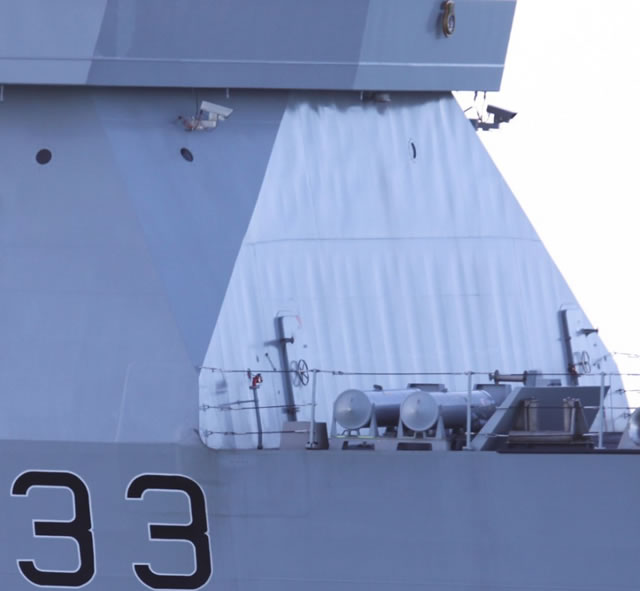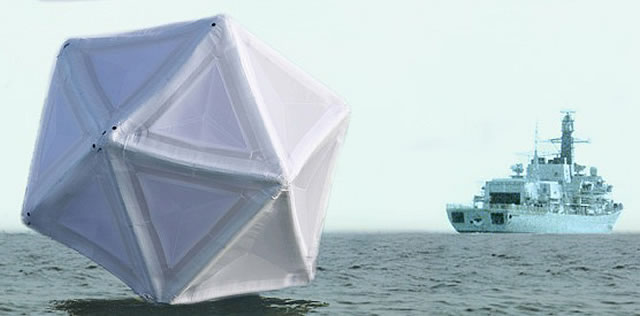 The decoy launcher tubes as fitted to the UK RN Type 45 destroyers |
|||
The NZ MoD’s FSU Project Director, Gary Collier,
said at the contract award ceremony, “We are delighted to have negotiated
this contract, and the FSU Project team is very much looking forward to
working Airborne over the next few years. We’re proud to be the
first customer outside of the UK and US, for this generation of the system,
and believe the decoys provide an important adjunct to the overall anti-ship
missile defence capability of our frigates and I know the RNZN is very
pleased to be getting the FDS3 system”.
Peter Barrett, the Airborne Systems Business Development Manager for naval decoys adds, “The FSU programme has allowed the NZ MoD to examine the range of naval anti-missile countermeasures in the marketplace, and which ones are most effective against the latest RF seeker technology. The selection of the Airborne Systems FDS3 corner reflector decoys recognises the fact that with the emergence of more advanced threats, navies will have to re-examine their strategies for defeating RF missiles, as the more traditional countermeasures that have been utilised for many years, will be increasingly ineffective against these latest missiles. The FDS3 system offers an effective solution against these advanced threats”. Airborne Systems corner reflector decoys have been fitted to the UK Royal Navy frigates since 1986, with the latest version for the UK Royal Navy entering service in 2006, and also being fitted to their latest Type 45 destroyers. In September 2013, Airborne Systems announced a contract award with the US Navy (USN) worth $41.7m to supply a USN variant of the FDS3 decoy system (Mk59), for fitment on USN frigates, over a 5 year programme. Other NATO nations have also fitted various versions of the decoy system onto their vessels. The decoy system itself comprises of deck-mounted launch tube, which is already preloaded with the decoy, and upon pressing the fire button in the Ops room the process then becomes fully automatic. The decoy is launched out of the tube, and fully inflates alongside the ship’s hull on the sea surface, before automatically being released and free floating past the stern. This entire deployment and inflation process takes a very short period of time, making the FDS3 system effective against supersonic threats. |
|||
 HMNZS Te Mana (F111) is one of ten Anzac class frigates and one of two serving in the Royal New Zealand Navy. (picture: Benchill) |
|||
Airborne Systems to Supply Anti-Missile Decoys for Royal New Zealand Navy ANZAC class Frigates
- Posted On











